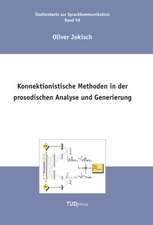Analysis of Synchronous Machines
Autor T. A. Lipoen Limba Engleză Paperback – 29 mar 2017
Focusing on the terminal rather than on the internal characteristics of machines, the book begins with the general concept of winding functions, describing the placement of any practical winding in the slots of the machine. This representation enables readers to clearly understand the calculation of all relevant self- and mutual inductances of the machine. It also helps them to more easily conceptualize the machine in a rotating system of coordinates, at which point they can clearly understand the origin of this important representation of the machine.
- Provides numerical examples
- Addresses Park’s equations starting from winding functions
- Describes operation of a synchronous machine as an LCI motor drive
- Presents synchronous machine transient simulation, as well as voltage regulation
Finally, the author addresses large signal modeling using MATLAB®/Simulink®, for complete solution of the non-linear equations of the salient pole synchronous machine. A valuable tool for learning, this updated edition offers thoroughly revised content, adding new detail and better-quality figures.
| Toate formatele și edițiile | Preț | Express |
|---|---|---|
| Paperback (1) | 682.78 lei 43-57 zile | |
| CRC Press – 29 mar 2017 | 682.78 lei 43-57 zile | |
| Hardback (1) | 1598.61 lei 43-57 zile | |
| CRC Press – 25 iun 2012 | 1598.61 lei 43-57 zile |
Preț: 682.78 lei
Preț vechi: 803.27 lei
-15% Nou
Puncte Express: 1024
Preț estimativ în valută:
130.67€ • 136.13$ • 108.64£
130.67€ • 136.13$ • 108.64£
Carte tipărită la comandă
Livrare economică 10-24 februarie 25
Preluare comenzi: 021 569.72.76
Specificații
ISBN-13: 9781138073074
ISBN-10: 1138073075
Pagini: 606
Ilustrații: 252
Dimensiuni: 178 x 254 x 31 mm
Greutate: 1.13 kg
Ediția:2nd edition
Editura: CRC Press
Colecția CRC Press
ISBN-10: 1138073075
Pagini: 606
Ilustrații: 252
Dimensiuni: 178 x 254 x 31 mm
Greutate: 1.13 kg
Ediția:2nd edition
Editura: CRC Press
Colecția CRC Press
Cuprins
Winding Distribution in an Ideal Machine. Reference Frame Theory. The d–q Equations of a Synchronous Machine. Steady-State Behavior of Synchronous Machines. Transient Analysis of Synchronous Machines. Power System Transient Stability. Excitation Systems and Dynamic Stability. Naturally Commutated Synchronous Motor Drives. Extension of d–q Theory to Unbalanced Operation. Linearization of the Synchronous Machine Equations. Computer Simulation of Synchronous Machines. Appendices.
Notă biografică
Thomas A. Lipo received his BEE and MS degrees at Marquette University and his Ph.D from the University of Wisconsin in 1968. After 10 years at the Corporate R&D Center of the General Electric Company in Schenectady. New York, he joined Purdue University as professor in 1978 and subsequently took the same position at the University of Wisconsin in 1980. He was granted the 2004 Hilldale Award, the university’s most prestigious award for scientific achievement. He has published more than 550 technical papers, secured 35 U.S. patents, and written five books in his discipline. He is a Fellow of IEEE and IET (London), and he is also a member of the National Academy of Engineering (USA) and the Royal Academy of Engineering (UK).
Descriere
All conventional machines rely upon magnetic fields for the purpose of energy conversion. This book approaches the study of electric machines by directly dealing with the electromagnetic fields. Focusing on the terminal rather than on the internal characteristics of machines, the text characterizes the machine in term of coupled magnetic circuits rather than magnetic fields. It provides problem sets and numerical examples, addresses Park’s equations starting from winding functions, describes operation as a LCI motor drive, and presents synchronous machine transient simulation as well as voltage regulation. The author aims to provide a deeper understanding of complex electromechanical drives.




















